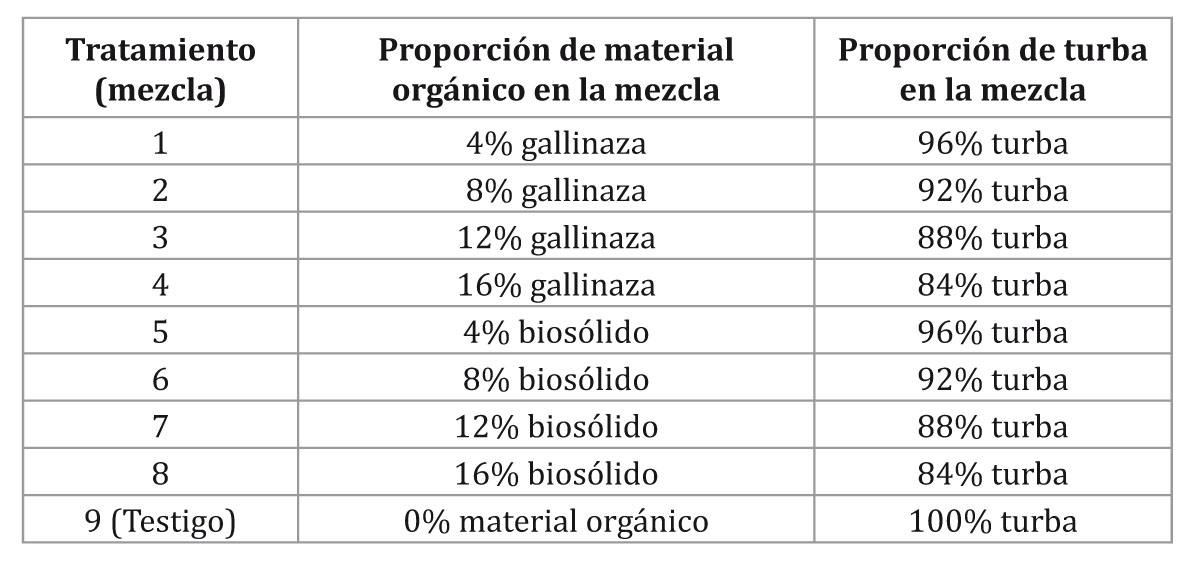Efecto de gallinaza y biosólido en mezcla con turba europea para producción de plántulas de cucurbitáceas
Palabras clave:
Cucumis sativus L., Cucurbita pepo L., plántulas, abonos, nutrición vegetalResumen
En México, la turba de Sphagnum (peat moss), es el principal sustrato utilizado para la producción de plántulas de hortalizas en bandeja de poliestireno, su precio es elevado por ser de importación, lo que hace necesario estudiar alternativas de menor costo. Por lo anterior, se propone mezclar la turba con materiales orgánicos de origen local como la gallinaza (G) y biosólido (B) para producir plántulas de pepino (Cucumis sativus L.) y calabacita (Cucurbita pepo L.). Ocho mezclas de material orgánico-turba fueron evaluadas para cada especie: 1) 4% G + 96% turba; 2) 8% G + 92% turba; 3) 12% G + 88% turba; 4) 16% G + 84% turba; 5) 4% B + 96% turba; 6) 8% B + 92% turba; 7) 12% B + 88% turba; 8) 16% B + 84% turba, el tratamiento testigo fue 100% turba. En los resultados se destaca, en pepino, la mezcla con 16% de biosólido que afectó positivamente en unidades SPAD (Soil Plant Analysis Development), diámetro de tallo y área foliar, mientras que la mezcla con 12% de gallinaza aumentó peso seco de parte aérea y total (P ≤ 0,05). En calabacita, la mezcla con 16% de gallinaza incrementó área foliar (P ≤ 0,05). En las variables de altura, peso seco de raíz y balance de plántula no se encontraron diferencias significativas en ambas especies y mezclas. Se concluye que mezclas de turba europea (peat moss) con gallinaza o biosólido, son una importante alternativa técnica y económica para la producción de plántulas en pepino y calabacita.Descargas

Descargas
Publicado
Cómo citar
Número
Sección
Licencia
Aquellos autores/as que tengan publicaciones con esta revista, aceptan las Políticas Editoriales.










.jpg)




